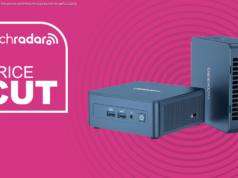Contact center-as-a-service functionality is gaining traction in a business segment dominated by old-school technology.
Amazon Web Services has had its CCaaS (contact center as a service) offering, Amazon Connect, in general availability for a few years, but it doesn’t get a lot of visibility. Contact center-as-a-service is a software deployment model that enables companies to purchase only the IT they need for call centers and is operated by a vendor to reduce IT, integration, and support costs. Despite its time in the market, I still get questions from contact center professionals as to whether Connect is ready for prime time and whether AWS has any kind of competitive edge versus a field filled with traditional vendors. Recently, I moderated a customer panel of three Amazon Connect customers at the Customer Contact Week show highlighting the unique attributes of Connect that helped them navigate their businesses through the pandemic. Below is a summary of each of the case studies. There was perhaps no industry that the pandemic hit harder than the travel industry, and that was certainly no exception for Hilton. Becky Ploeger, Global Head of Reservations and Customer Care at Hilton, said that in the hotel chain’s 100 years of business, it had never seen anything like what they experienced during the pandemic, adding to the narrative that we were in uncharted territory. To help its customers, Hilton became the first hotel chain to offer free cancellations within 24 hours of check-in time, and this created an initial massive spike in calls because people were canceling reservations due to stay-at-home orders. Then, just as quickly, the call volume went almost to zero for an extended period. This created some interesting challenges for Hilton. The first is cost. With a traditional seat-based model–where the business pays per seat, per month, for an extended period of time–Hilton would have been forced to buy for the spike, that is, peak utilization and then significantly overpay during the stay-at-home period. AWS is the only vendor with a utilization-based model in which customers can provision as many users as they like and only pay per call; this saved Hilton a significant amount of money. Ploeger didn’t calculate exactly what the savings were, but she did say call volume dropped 90% from peak to the bottom of the valley. From her perspective, one of the best aspects of this is that the pricing is fully automated. She did mention that, with the other SaaS vendors Hilton uses, she had to go through lengthy negotiation periods to get them to help with pricing.






